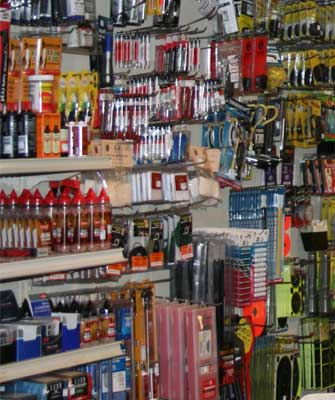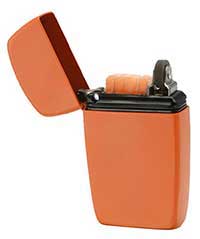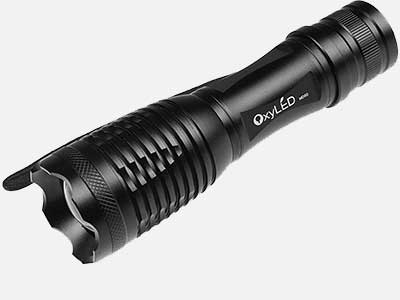In a previous post, we took a look at some basic survival skills that can significantly enhance your chances of getting through an emergency situation in one piece. To build off of that, we’re now going to take a look at some simple items that can be essential in an emergency situation.

To be clear, the kind of emergency that we’re talking about isn’t on any large scale; rather, a more imminent type of crisis that faces all hunters and outdoor enthusiasts, such as the threat of getting lost and spending a night (or longer) alone in the wilderness. It’s a situation that few are ever prepared for, yet is so real a possibility that there is no excuse for not having some sort of plan, if only just in case.
With that in mind, our list of essential survival items will differ from standard everyday carry item lists and suggested items for a get home bag. Our focus is on the most basic and most essential things. Those which are so easy to take on you there’s no reason not to. They make a great starting place for building your everyday carry items for larger survival purposes.
But, for the hunter who’s looking to cover their butt just in case of who knows what, they provide the most functionality, versatility, and will help you meet basic survival needs (water, shelter, fire, and food.)
Knife
One of the most essential survival items you can carry on yourself.
If you’re in the woods hunting, there’s a good chance you already have a knife on you, but anyone out hiking or otherwise occupying themselves in the wilderness would do well to carry a sharp knife, too.
A good knife can be used to make tools for:

While a simple flip knife is enough, a better option is to have a multi-function knife with additional tools included.
Of course, a survival knife is also a significant upgrade, as the rear bolster is removable, allowing you to place some items into the handle.
Many survival knives already come with the handle fully stocked with useful items to get you through a variety of situations, such as having a compass on the inside of the screw-off bolster, matches, fishing line and a hook, and maybe an adhesive bandage or a small sewing kit.
They usually have paracord on them, either wrapped about the handle or hanging from the bolster. Many survival knives are quite large and heavy. However, this is an important part of their design as they are meant to be able to cut wood and be used for defense (if necessary.)
Lighter or Water/Stormproof Matches

The ability to make fire is one of the most important survival skills.
Being able to start and sustain a fire keeps you warm in inclement weather, allows you to boil water in order to kill off pathogens, to cook food, and provides protection against predator animals.
A lighter is an easy solution, they’re small and fit easily into any pocket and have enough fuel to last you at least a few weeks with heavy use.
Matches are fine, but extra care needs to be taken to ensure they stay dry. That means placing them in a waterproof container and replacing the matches in your survival kit with new matches every season.

There are also water and stormproof matches available that repel moisture and will even reignite after being fully submerged in water. These matches tend to incorporate phosphorous, so they burn hot and for about 10-15 seconds to give you a greater chance of getting your tinder lit and a strong fire going. These matches often are sold in waterproof containers to afford them extra protection and to allow you to attach them to paracord for easier carrying.
Flashlight
This is one of those items that seems like you could get away without it, but when you have it, it soon becomes one of your most heavily used ones.
A good LED flashlight will produce a bright light and use minimal battery power.

Unless the moon is full or gibbous, night in the wilderness is dark, really dark. You can easily lose your way in just a few paces, become disorientated, and be unable to find your way back to your shelter. Having a flashlight prevents that.
It’s also handy to have so you don’t lose items, for checking out odd sounds in the night, scaring off predators, and as a signal.
A good flashlight is also no larger than your thumb, fitting easily into your pocket.
Water Bottle or Canteen
Finding potable water can be difficult if not impossible depending upon your location.
During winter, snow can always be melted and drunk, but during warmer months it pays to have clean water on you.
The ideal choice for a water-carrying tool would be a stainless steel water bottle that can withstand high temperatures (not all of them can, so double checking this point is crucial). This type of bottle is not only tough, but it can be used to boil water in should you find yourself needing to rely on water from a natural source, such as river, stream, or pond.

Most stainless steel water bottles also have screw tops that can be attached to a length of paracord or a carabiner and then fastened to your belt, backpack, or hunting bag.
Safety Whistle
It’s easy to overlook this item, but a loud whistle can help to get you found should you end up lost.
Safety whistles are louder than the toy whistles your kids play around with (as hard to believe as that is), and some of them are even able to be sounded under water, thanks to an ingenious design.

In winter, a safety whistle is loud enough to cut through even the harshest blizzard to alert search parties. They’re also very compact so carrying one on you won’t weigh you down or take up precious space.
Paracord
The quintessential survivor gear, so useful that it’s being made into bracelets so you can carry about 10 feet of paracord with you easily.
This nylon cording is lightweight yet very durable. It can be used for lashing to make a shelter, snares to catch small game, for replacing blown boot laces, and for hauling game back to your make-shift camp.

Following the same weaving style as with paracord bracelets, you can create a longer finished length that you can attach your smaller survival items to with additional lengths of (unwoven) paracord and duct tape (in the case of a lighter.) This can then be worn around your neck or attached to your belt so it’s out of the way and you always have it handy. Plus, by attaching all of these smaller items to one larger item, you diminish the risk of losing an essential piece.
It’s too easy to set down a small thing and then forget to pick it up again. Having all of your small items attached to each other makes this less likely to happen.
Additional Essential Survival Items to Consider Adding to your Survival Kit
While these six items are great basic items to have you, there is always room to expand your survival gear. These following five items are a great place to start.
Fire starters
These are compact, lightweight, and can make it easier to start a fire in inclement weather. Best of all, you can quickly make effective fire starters with items you already have laying around the house.
Healing Salve
A small tin of salve fits easily in any pocket. You can make your own one to combat chapped lips and dry skin, as well as for more pressing needs such as to combat rashes, burns, insect bites, and general skin ailments. In a previous article, we provided you with a recipe for a homemade salve to heal windburn skin in winter. While this recipe will also work for mild rashes and insect bites, you can add to its efficacy and make it more versatile by adding aloe and/or yarrow.
Plastic Sheet
A thin plastic sheet at least as long as you and just as wide can be used to create a makeshift shelter that can protect you from the elements and insulate you from the cold. Find directions on how to make such a shelter in our post on Basic Survival Skills Every Hunter Needs to Know.
Compass
There’s a reason why a compass isn’t in our top 6 list: a compass is useless unless you not only know how to use it but have experience using one, too. Nonetheless, it made our list, and we recommend learning how to use it and having one with you.
Here’s a thorough and comprehensive video course about how to use a compass and land navigation for beginners:
Energy Bars
While foraging is a good way to get food during warmer months in most locations, food can be harder to come by in the winter. Having a few high protein energy bars in your hunting bag or pocket will get you through a couple of days of being stranded in the wilderness.
Final Thoughts
While no amount of gear can replace basic survival skills and experience in applying those skills outdoors, these simple items can greatly help to increase your chances of making through an emergency situation.
As a hunter, you very likely have a few empty pockets or a hunting bag that will easily hold a few extra items. These items are so useful and yet so small that there isn’t any excuse why you shouldn’t have them on you every time you head out into the woods.